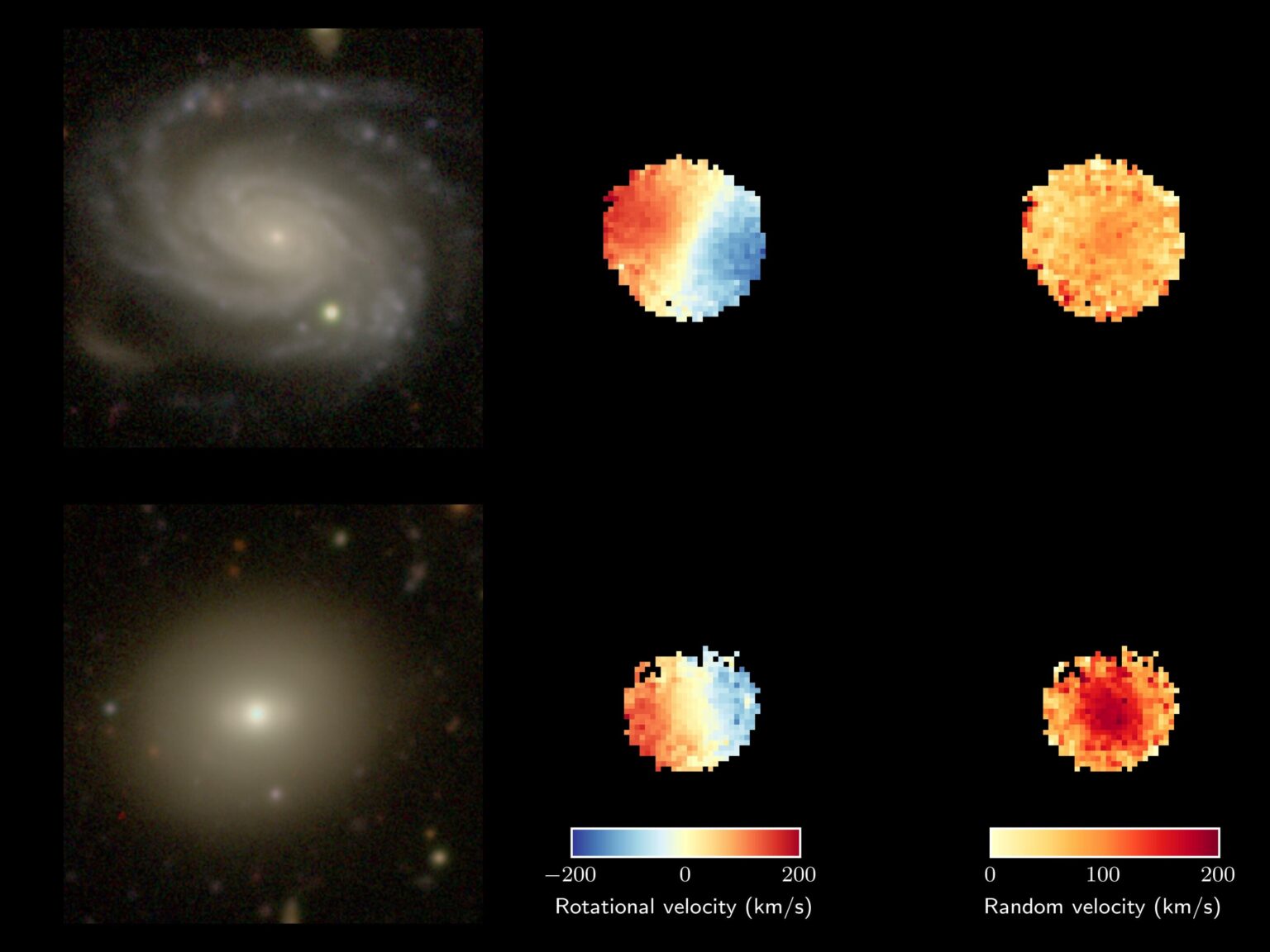Previously, scientists believed that the main factors determining the movement of stars in galaxies were their mass and environment. However, a new study proves that this is not the case.

How do stars move in galaxies?
Galaxies begin their lives with the orderly rotation of stars, but in some of them this movement is more chaotic. Until now, scientists didn’t know what was the cause of this. They assumed that the environment of the system and its mass were crucial.
A new study has found that neither one nor the other is the most important factor. It shows that the tendency of stars to chaotic motion is mainly due to the age of the galaxy. “When we did the analysis, we found that age, consistently, whichever way we slice or dice it, is always the most important parameter,” says the study’s first author, Professor Scott Croom, an ASTRO 3D researcher at the University of Sydney.
Scientists have concluded that in a young galaxy, no matter where it is located and no matter what mass it has, the orbits of stars will always be predominantly ordered. But in the old galaxy, they will always be chaotic despite other factors.
“The study updates our understanding from previous studies that have variously suggested environment or mass as more important factors. But the earlier work is not necessarily incorrect,” says the second author of the study, Dr. Jesse van de Sande.
About the Milky Way
Our galaxy, the Milky Way, still has a thin disk in which star formation takes place. Therefore, it is considered still to be actively giving birth to new luminaries that rotate more or less in an orderly manner.
However, if we look at our Galaxy in more detail, we can see what is called a Thick disk. It is not as bright as the star formation region, but it is much more massive. Moreover, it surrounds and affects the thin disk. The stars in this area rotate much more randomly than in other places.
The study allows astronomers to exclude many processes when trying to understand the formation of galaxies and, thus, refine models of the development of the Universe. The next steps will be to develop simulations of the evolution of stellar systems with more detail.
According to phys.org
Follow us on Twitter to get the most interesting space news in time
https://twitter.com/ust_magazine


